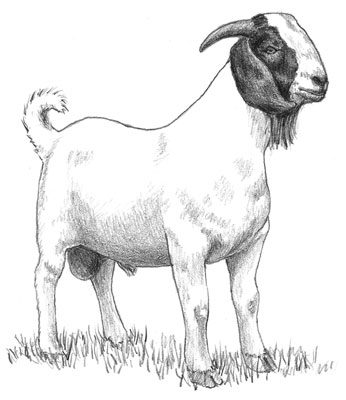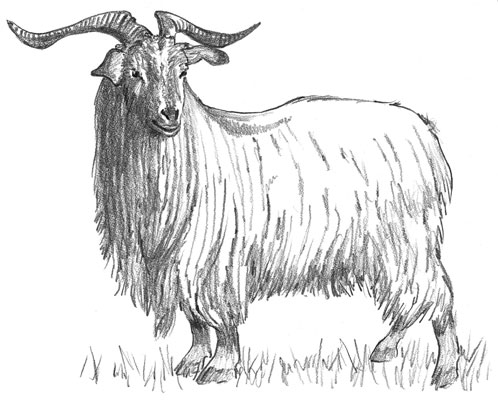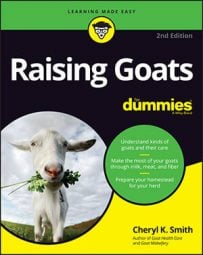Rasing your own goats for meat can give you a greener, more sustainable lifestyle. A lot of people around the world eat goat meat, which is lean and delicious. Meat goats are generally not used for milking, and some even have traits that make them undesirable to milk. Most of the breeds don't make good fiber goats because they have short coats, but the Spanish goat is an exception.
Meat goats grow fast and are fantastic brush-eaters. Some breeds are nearly self-sufficient because they evolved in feral conditions. They require little management because they have developed resistance to the parasites, foot rot, and respiratory problems that are so common in other goats.
If you're interested in goats to sell in the fast-growing U.S. market, to get rid of kudzu or blackberries, or just for your own freezer, you have a growing number of breeds to choose from.
Boer: Boer goats are white and reddish-brown (although some are all red), and many are horned. Their horns are short and curve back close to the head. Bucks can weigh from 260 to 380 pounds and does from 210 to 265 pounds.
Although expensive, Boers are adaptable, hardy, affectionate, and mild-mannered. Boers do have some fairly common genetic defects you need to watch for, including extra teats and abnormal testicles.
 A South African Boer buck
A South African Boer buckTennessee fainting goat: Tennessee fainting goats are also known as myotonic or stiff-legged goats because of their tendency to go rigid and fall down when they're startled. This is a genetic defect in a recessive gene that probably started in just one goat and then was continued through breeding
Fainting goats weigh in at 50 and 75 pounds and becoming no more than 25 inches tall. They're about the same size as the mini dairy goats. They come in an array of colors and patterns and have long ears that stick out sideways and long horns that curve backward. They can be shy animals, but have sweet personalities.
Kiko: Kikos are most often white with long, scimitar-like horns and medium ears that stick out sideways. They can gain substantial weight without supplemental feeding. If you have a large range for these goats, they may be more economical than Boers.
Spanish goat: Spanish goats are usually medium-sized and lanky with long horns that often twist at the end. They come in all colors and mostly have short hair but can also have long hair.
 The long-haired Spanish goat is also considered a Cashmere.
The long-haired Spanish goat is also considered a Cashmere.
Because meat goats are growing in popularity, breeders are crossbreeding the existing breeds to develop newer, better goats. Some of the better-known breeds are
Texmaster: A moderate-sized meat goat and a trademarked cross between Boers and Tennessee Fainters developed by Onion Creek Ranch in Texas.
Moneymaker: Developed by Bob and Dusty Copeland of California by first crossbreeding Saanens and Nubians and then adding Boers into the mix.
Savanna: A heat- and drought-resistant breed with excellent mothering abilities. Savannas are muscular, with long ears, thick black skin, and a short white coat that develops a nice fluffy cashmere undercoat for additional warmth during the winter. They are highly adaptable to a variety of unpleasant weather conditions and are therefore suited to a number of U.S. locations.

